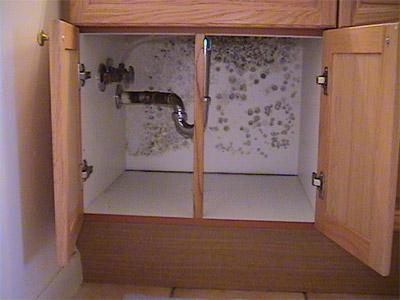 No homeowner wants to find out that mold is wreaking havoc on their property. This is very stressful news indeed—especially since cleanup operations can put a strain on household budgets. Families might even need to evacuate their homes for several days while the problem is being dealt with by professionals. Also, it’s often legally required to report mold-related cleanup operations to future potential buyers, making it more difficult to sell your home.
No homeowner wants to find out that mold is wreaking havoc on their property. This is very stressful news indeed—especially since cleanup operations can put a strain on household budgets. Families might even need to evacuate their homes for several days while the problem is being dealt with by professionals. Also, it’s often legally required to report mold-related cleanup operations to future potential buyers, making it more difficult to sell your home.
On top of all that, mold problems in your home may be virtually invisible. This pesky intruder likes to grow unseen—in the walls, under the floors, and wherever it will remain undisturbed. Often times, when homeowners notice visible mold, the real source of the problem is deeper. Unless you call a professional with the right training and tools, it can be difficult to know what’s really going on.
There are, however, things you can do to lower your chances of a hidden mold problem. These are great long-term mold prevention techniques, and the sooner you put them into practice, the better protected your home will be against the nuisance represented by mold.
1. Keep humidity under control
Humidity in your home is one of the main factors that either causes or exacerbates mold problems. The importance of controlling humidity throughout the year cannot be overstate in terms of mold prevention. During the Summer, your air conditioner can serve this purpose, as modern A/C units are designed to lower air temperature and humidity. For extra protection year round, consider installing a dehumidifier. Your home will be more comfortable, and mold will have a difficult time growing!
2. Follow your nose
Seeing mold is one obvious way to confirm its presence—another obvious way is smelling mold. This is one of the biggest “faults” of residential mold. Although it grows unseen, it usually emits a strong and distinct odor that gives away its presence. If you can’t see any mold, but your nose tells you that mold is definitely around, it may be time to call for a professional mold inspection.
3. Clean up water damage thoroughly
Many homeowners don’t realize that mold becomes a much more serious risk after a significant water damage event. A flooded basement or a broken pipe may be relatively easy to resolve, but even if the unwanted water is only there for a day or two, mold can quickly move in. It’s a smart idea to have a pro mold inspection on the heels of any significant water damage event. That way, your bases are covered.
4. Call the experts
Most professional mold inspectors offer on-site inspections at a very reasonable cost. This makes it very difficult to justify the “wait and see” policy. Growing numbers of households are opting for greater peace of mind by investing a few dollars in a professional mold inspection. Unless you’re trained in detecting residential mold, this is the only way to know for sure!
Keep in mind that “seeing” is not the only way to detect mold. Practice these mold prevention efforts and prevent hidden mold from become an issue in your home!
We hope this information has been very useful to you, and we welcome your questions or comments!

